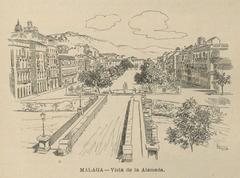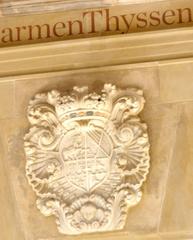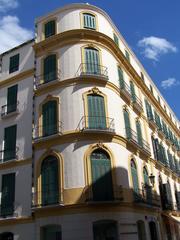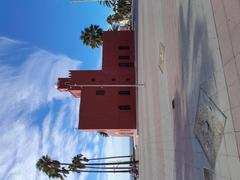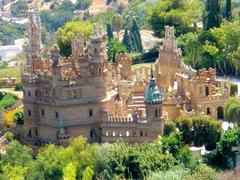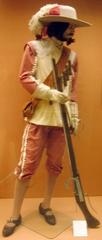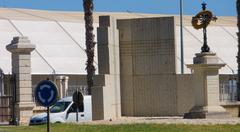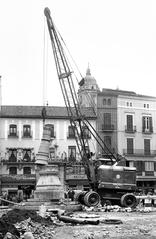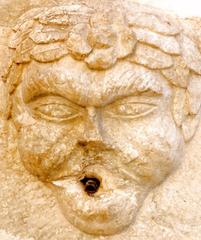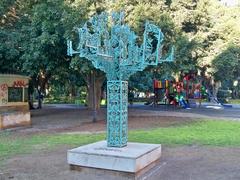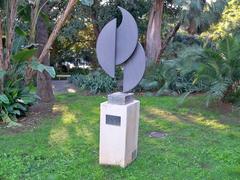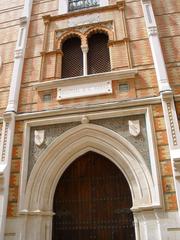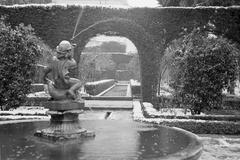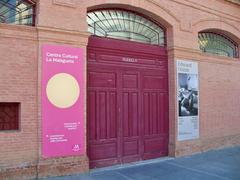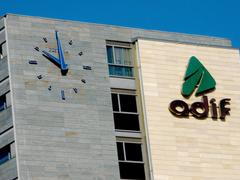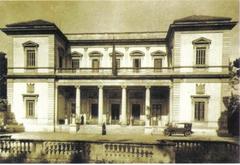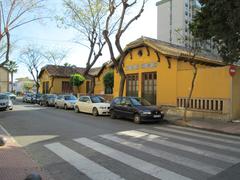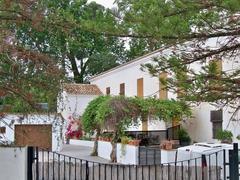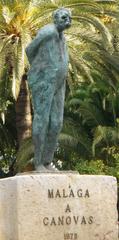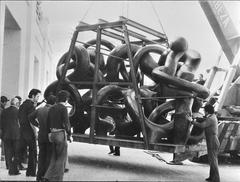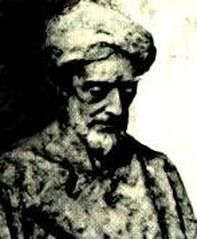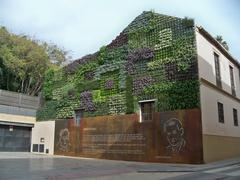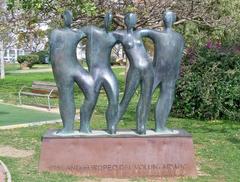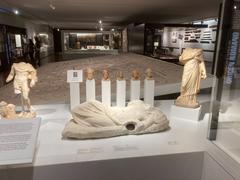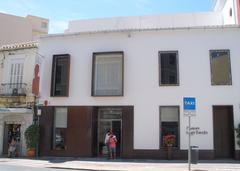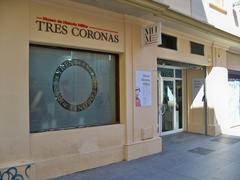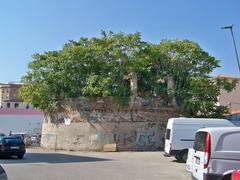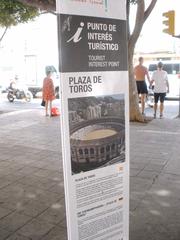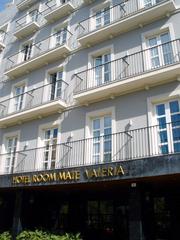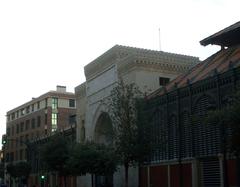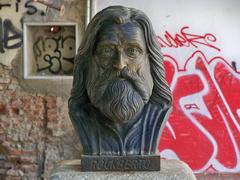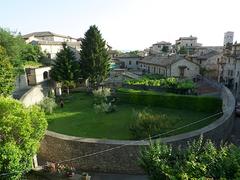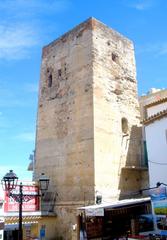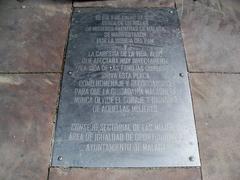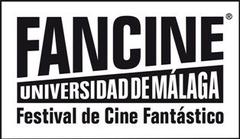Visiting the Monument to Minister Carlos Rein Segura in Málaga, Spain: Tickets, Hours, and Tips
Date: 03/07/2025
Introduction
The Monument to Minister Carlos Rein Segura in Málaga is a meaningful tribute to one of the city’s most influential 20th-century figures. Carlos Rein Segura (1897–1992), an engineer and Minister of Agriculture during the Francoist regime, played a fundamental role in modernizing Andalusian agriculture and supporting rural development. His legacy is especially evident in Málaga, where his policies on irrigation, mechanization, and electrification transformed both the economy and urban landscape. The monument, located in Plaza de la Sauceda at the heart of the Torres de la Serna neighborhood—a district closely tied to Rein Segura’s vision—serves as a focal point for local history and civic pride. This guide provides comprehensive information on the monument’s history, artistic features, visiting details, accessibility, travel tips, and nearby attractions. For additional resources, consider consulting official tourism platforms or downloading the Audiala app for curated tours and updates (La Opinión de Málaga, Andalucía.org, Mapcarta).
Table of Contents
- Origins and Historical Background
- Socio-Political Context of the Monument’s Creation
- Location and Urban Significance
- Artistic and Architectural Features
- Current Condition and Conservation
- Symbolism and Interpretive Elements
- Visiting Hours and Ticket Information
- Accessibility
- Travel Tips
- Nearby Attractions
- Special Events and Guided Tours
- Visuals and Media
- Commemorative Practices and Public Memory
- Frequently Asked Questions (FAQ)
- Conclusion and Visitor Recommendations
- Sources
Origins and Historical Background
Carlos Rein Segura was an influential engineer and politician whose tenure as Minister of Agriculture ushered in a new era of rural and economic development in Andalusia. The monument was erected in mid-20th-century Málaga, reflecting both the city’s gratitude and Spain’s broader efforts to memorialize prominent figures of modernization. Rein Segura’s initiatives, especially in irrigation projects for the region’s arid lands, left a lasting impact on Málaga’s growth and resilience.
Socio-Political Context of the Monument’s Creation
Installed during a period of national recovery following the Spanish Civil War, the monument underscores the Francoist government’s strategy of commemorating individuals who embodied progress. Rein Segura’s reforms were instrumental in revitalizing Málaga’s agricultural sector, ensuring food security, and stimulating the local economy during challenging times.
Location and Urban Significance
The monument is located in Plaza de la Sauceda, within the Torres de la Serna neighborhood—a district that was purpose-built in the 1940s as housing for workers from the Tabacalera tobacco factory, a project overseen by Rein Segura himself (La Opinión de Málaga). This setting links the monument directly to the community it was designed to serve.
The square is surrounded by typical post-war residential architecture, and the monument stands as a prominent focal point, easily accessible on foot or by public transport. Its placement also makes it convenient for visitors exploring the west side of Málaga, close to attractions like the Museo Automovilístico de Málaga and the Colección del Museo Ruso San Petersburgo Málaga (Mapcarta).
Artistic and Architectural Features
Structure and Dimensions
The monument features a stone bust of Carlos Rein Segura, rendered in a classical style, atop a rectangular pedestal. The total height is approximately 2.5 meters, with the bust comprising about 0.7 meters. The design’s modest scale reflects its intimate community connection.
Materials and Craftsmanship
Crafted from pale stone—likely limestone—the bust and pedestal present a cohesive, monolithic appearance. The choice of material, while traditional, has made the monument susceptible to weathering and erosion over time. The execution is earnest but not ornate, emphasizing the practical ethos of the neighborhood (La Opinión de Málaga).
The Bust and Pedestal
The bust depicts Rein Segura in formal attire, with a serious, contemplative expression. Weathering has softened facial features, with the nose particularly eroded. The pedestal originally bore an inscription, now largely illegible or missing due to environmental damage and vandalism. Graffiti further mars the structure, reflecting challenges in heritage conservation.
Current Condition and Conservation
Decades of exposure have led to significant surface erosion, especially of the bust’s facial features, accompanied by instances of graffiti and vandalism (La Opinión de Málaga). The monument’s custodianship appears unclear, and it is not regularly maintained by city authorities, contributing to its gradual decline.
Symbolism and Interpretive Elements
While visually austere, the monument’s symbolism is deeply tied to Málaga’s social history. The bust stands as a tribute to Rein Segura’s transformative influence on the local community, especially the Tabacalera workers’ housing project. This focus on practical achievement distinguishes it from other more ornate commemorative works in the city (The Travel Blogs).
Visiting Hours and Ticket Information
The monument is situated in a public plaza, accessible 24 hours a day, seven days a week. There are no entrance fees or ticket requirements, making it an open and inclusive site for all visitors.
Accessibility
The plaza is wheelchair accessible, with paved paths and nearby public transportation links. However, the condition of adjacent sidewalks may vary. Seating is available nearby, and the flat terrain allows close approach for observation and photography.
Travel Tips
- Best time to visit: Morning or late afternoon, for optimal lighting and fewer crowds.
- Combine your visit: Explore adjacent attractions such as the Museo Automovilístico de Málaga, Colección del Museo Ruso San Petersburgo Málaga, the Roman Theatre, Alcazaba, and the Cathedral of Santa María de la Encarnación.
- Photography: The monument’s weathered details provide unique photo opportunities. Try different angles to capture both the sculpture and the surrounding neighborhood.
- Respect: Please avoid touching or marking the monument, to help preserve its historical value.
Nearby Attractions
- Museo Automovilístico de Málaga: Vintage car collection nearby.
- Colección del Museo Ruso San Petersburgo Málaga: Russian art in a striking setting.
- Roman Theatre: Ancient archaeological site.
- Alcazaba: Moorish fortress with panoramic city views.
- Cathedral of Santa María de la Encarnación: Notable for its Renaissance architecture.
Pairing your visit to the monument with these sites offers a well-rounded exploration of Málaga’s diverse heritage.
Special Events and Guided Tours
While there are no regularly scheduled tours or events specifically for the monument, it is sometimes included in broader city heritage walks. Occasional community commemorations or educational activities may be held in the plaza—check with local tourist offices for up-to-date event information.
Visuals and Media
 Alt text: Stone bust of Carlos Rein Segura on rectangular pedestal in Málaga’s Plaza de la Sauceda.
Alt text: Stone bust of Carlos Rein Segura on rectangular pedestal in Málaga’s Plaza de la Sauceda.
For additional images, see the Wikimedia Commons category.
Commemorative Practices and Public Memory
The monument remains a site for local remembrance, educational visits, and civic reflection. Its presence anchors the story of Málaga’s post-war recovery and underlines the importance of visionary leadership in shaping community identity.
Frequently Asked Questions (FAQ)
Q: What are the visiting hours for the Monument to Carlos Rein Segura?
A: The monument is located in a public plaza accessible at all times.
Q: Is there a ticket or entrance fee?
A: No, visiting the monument is free of charge.
Q: How do I get there?
A: Local buses serve the Torres de la Serna neighborhood, and the site is walkable from nearby museums.
Q: Is the monument wheelchair accessible?
A: Yes, though nearby sidewalks may vary in condition.
Q: Are there guided tours?
A: While there are no specific tours for the monument, some city heritage tours may include it.
Q: What is the current condition of the monument?
A: The monument shows signs of weathering, erosion, and some vandalism.
Conclusion and Visitor Recommendations
The Monument to Minister Carlos Rein Segura is an essential stop for anyone interested in Málaga’s 20th-century history, agricultural heritage, and urban development. Its free, all-day access and central location make it easily includable in any Málaga itinerary. While the monument faces ongoing conservation challenges, it continues to stand as a testament to collective memory and civic pride. To enhance your visit, pair the monument with neighboring historical sites, and consult official tourism resources or the Audiala app for the latest updates and curated tours.
Sources
- La Opinión de Málaga – “La preocupante erosión de un homenajeado”
- Mapcarta – Monument to Carlos Rein Segura
- Andalucía.org – Málaga Cultural Tourism
- PlanetWare – Málaga Historical Sites and Travel Tips
- The Travel Blogs – Monuments and Statues in Málaga, Spain
For more information on Málaga’s historical sites, visit the official Málaga tourism website.
